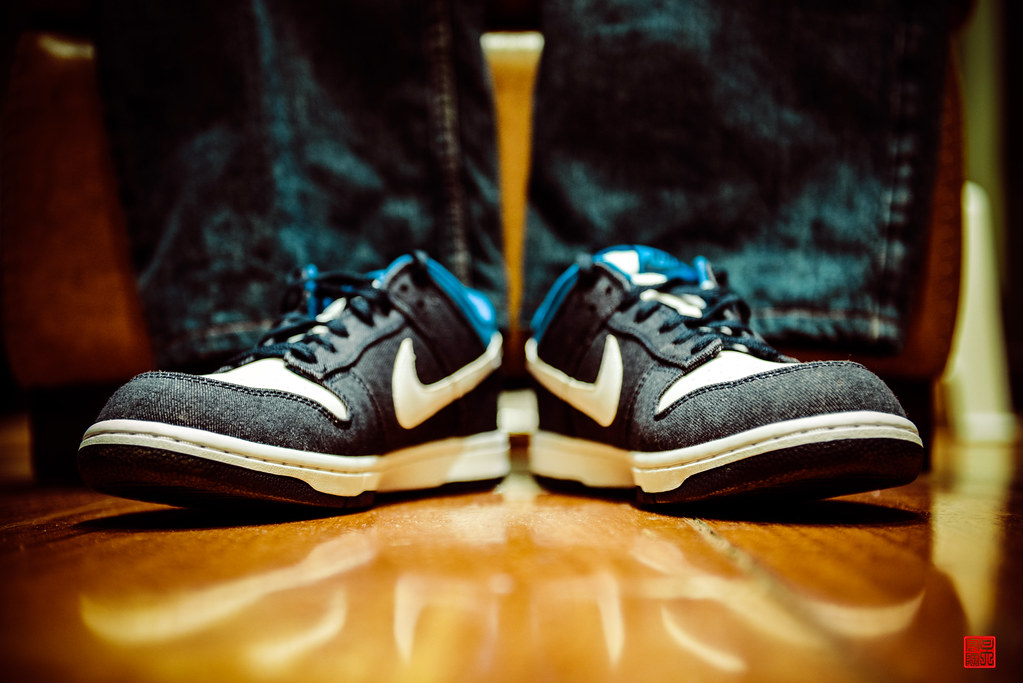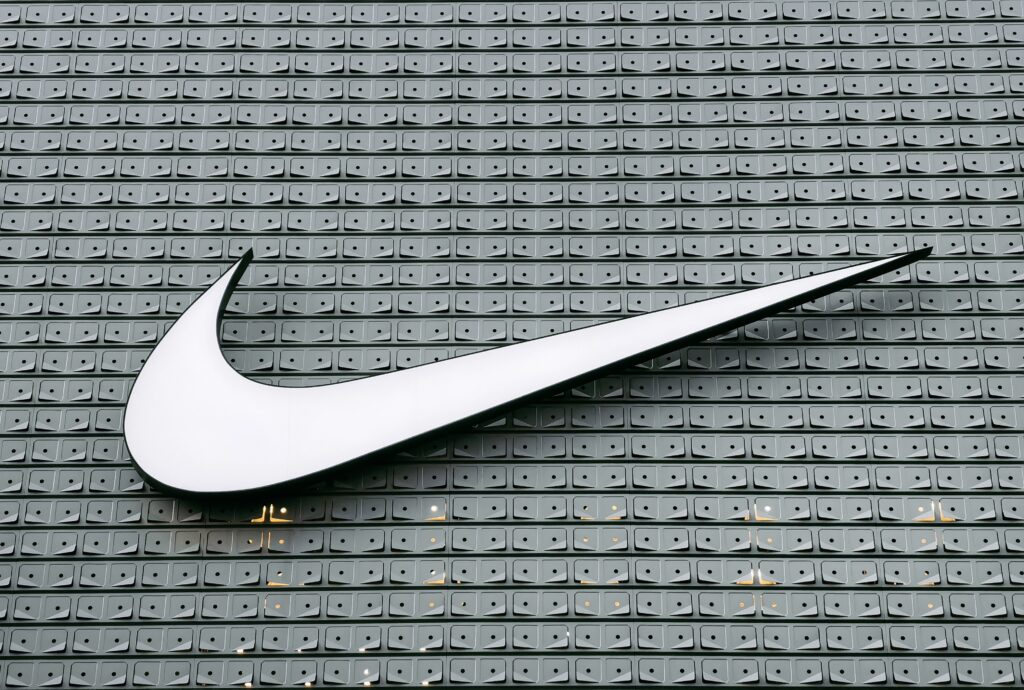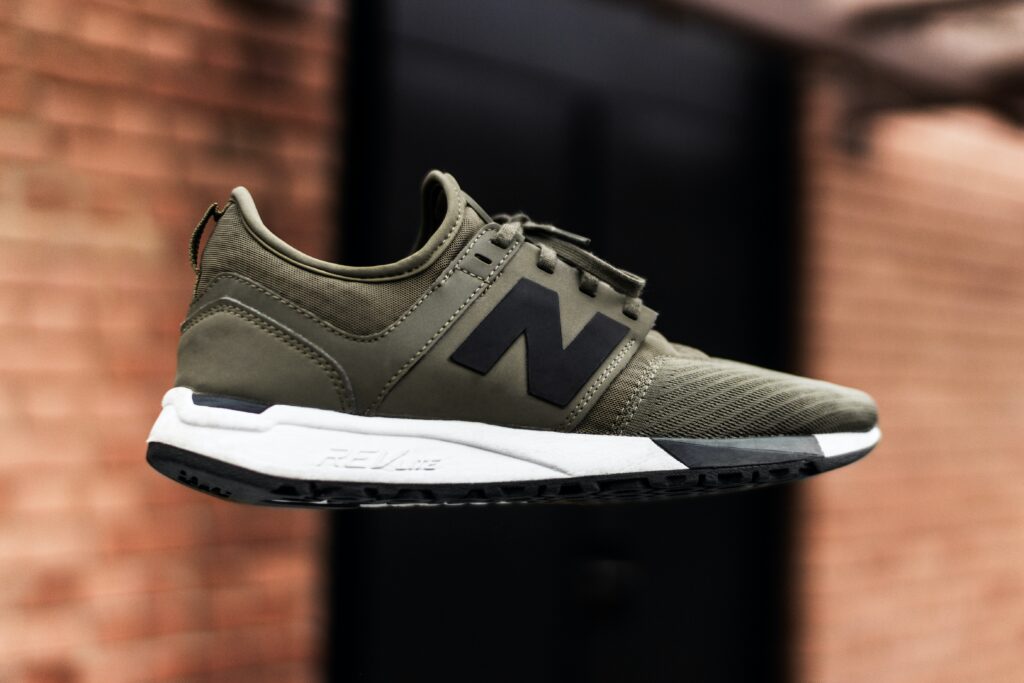The Nike Dunk is one of the most iconic shoes in the world. Originally designed as a basketball shoe, it has transitioned into a streetwear and fashion staple over the years.
From being worn on the court by some of the greatest basketball players of all time to being rocked by sneakerheads all around the world, the Nike Dunk has come a long way since its debut in 1985.
Today, we will talk about the history of Nike Dunk and their impact on the world. If you are ready, let’s go!
The Birth Of Nike Dunks

It all started in 1985 when Nike launched the first Dunk sneaker as a basketball shoe designed for college teams. Several colorways of Dunks were paired with NCAA team colors, and they soon became a must-have shoe for college basketball players.
However, it was not until its collaboration with the legendary Michael Jordan that Nike Dunks cemented their place in basketball history. Jordan rocked the Dunks in his games, skyrocketing their popularity among basketball players and enthusiasts.
In the early 2000s, Nike Dunks made a quick transition from basketball courts to the fashion world. Skaters and streetwear enthusiasts adopted the Dunks as their go-to footwear. Nike cashed in on this growing subculture and began releasing limited edition Dunks in new colorways and unique materials. Coupled with their limited availability, these releases resulted in a massive rush among sneakerheads. Today, people hunt for these limited edition Dunks to add to their collections or sell for astronomical prices!
Fashion designers and luxury brands like Off-White, Travis Scott, and BAPE have collaborated with Nike Dunks to release high-end versions with hefty price tags. It’s not just about fashion though. Celebrities like Bella Hadid, Justin Bieber, and even Barack Obama have been spotted wearing the iconic Dunks.
Nike Dunks have also served as a canvas for artists and designers to showcase their creative abilities. These sneakers provide the ideal backdrop to express their creativity and storytelling abilities. From SpongeBob SquarePants to Ben & Jerry’s ice cream flavors, Nike dunks have had some of the most eye-catching and imaginative designs.
Nike Dunks have come a long way since their debut as a basketball shoe and have created their own niche in the sneaker industry. From sportswear to streetwear, Nike Dunks have served different purposes for different people and have become a must-have item in everyone’s wardrobe.
Their popularity, value, and construction are incredibly diverse, and each unique Dunk release is eagerly awaited by collectors and sneakerheads alike. It’s hard to predict what the future holds for the Nike Dunks, but one thing is for sure – it’s here to stay!
The Dunk’s Basketball Roots
The Nike Dunk was first introduced in 1985 as a high-top basketball shoe. It was designed by Nike designer Peter Moore and was inspired by the Air Jordan 1, which had been released the previous year. The Nike Dunk was originally created to meet the needs of college and professional basketball players, who were looking for a high-performance shoe that was both comfortable and stylish.
In 1986, Nike released its first line of colorways for the Nike Dunk. This was a groundbreaking move, as it was the first time a sneaker brand had released a sneaker in multiple colors.

The Nike Dunk quickly became popular among basketball players and sneakerheads alike. The sneaker was known for its durability, high-top design, and cushioning, making it a great option for players who were looking for a shoe that could withstand the demands of the court.
Throughout the 1990s, the Nike Dunk continued to evolve. Nike released new colorways and variations of the sneaker, including a low-top version that was released in 1999. The sneaker also became popular among skateboarders, who appreciated its durability and support. As a result, Nike began releasing special editions of the Nike Dunk that were designed specifically for skateboarders.
In the early 2000s, the Nike Dunk began to transition from a performance basketball shoe to a lifestyle sneaker. The sneaker was featured in a number of fashion collaborations and was worn by celebrities on and off the court. In 2002, Nike released the Nike SB Dunk, which was designed specifically for skateboarders. The sneaker featured additional padding and cushioning to protect skaters’ feet from impact.
Today, the Nike Dunk is considered to be a fashion icon and is one of the most sought-after sneakers in the world. The sneaker has been re-released in a number of different colorways and collaborations, including collaborations with fashion designers and musicians.
Despite its transition from a performance basketball shoe to a lifestyle sneaker, the Nike Dunk still remains true to its roots. The sneaker continues to be designed with the needs of athletes in mind and is still a great option for basketball players who are looking for a high-performance shoe that is both stylish and functional.
The Rise of the Dunk in Skateboarding Culture (1990s)
The decade following the initial release of the Dunk High witnessed subtle yet crucial changes to this iconic sneaker. Introducing a nylon tongue for weight reduction, a shorter shaft, and a thicker swoosh allowed the sneaker to make its mark in the skateboarding world, unbeknownst to Nike at the time. Rather than recognizing the Dunk’s growing affiliation with skate culture and embracing these design modifications, the brand persistently released laughable sneaker silhouettes to cater to the same scene.

Nike’s first attempt to captivate skateboarders in 1997 was, to put it plainly, underwhelming. Prior to the Dunk, there were the Choad, the Snack, and the Schimp, designs that were too literal in their naming conventions, resembling onomatopoeia. Accompanied by cheesy advertisements featuring a young Bam Margera titled “What If We Treated All Athletes Like Skateboarders,” Nike’s message went ignored, their shoes ridiculed. The market already favored footwear companies such as eS Footwear, Globe, DC, and Vans.
Skate culture thrived as a growing scene, and Nike aspired to be a part of it. However, skateboarders viewed the brand as just another soulless corporation infiltrating their world. The community, protective of its autonomy, saw Nike as a commercial entity rather than an ally in their pioneering endeavors. The Choad, the Snack, and the Schimp were forced endeavors by the brand.
Outside of Nike’s initial perspective, the Nike Dunk naturally found its way into the hearts of skateboarders through organic adoption. This marked the true beginning of the Swoosh’s journey in skateboarding, a beginning that unfolded because, as expressed by a Nike spokesperson, “the shoe was perfect for skating.”
The Nike Dunks gained popularity among skaters after falling out of favor elsewhere. In the early 1990s, they could be found at discount stores or forgotten in dusty attics. However, this allowed the model to carve its own path and become a staple in the New York skate scene.
Skateboarders were drawn to the Nike Dunk for its affordability, accessibility, and ability to provide cushioning, support, and traction necessary for the sport. The durability, cup-sole shape, and construction also made them well-suited for skateboarding. Moreover, their versatile style catered to the community’s passion for both the sport and the accompanying fashion.
As the skateboarding trend gained momentum and started impacting the sneaker industry, specifically the Nike Dunk, the brand realized the solution was right in front of them. In 1998, Nike revamped the Dunk High and reissued it in popular original colorways, further propelling the growing trend. However, it was not until Sandy Bodecker became the general manager of Nike SB in 2001 that the model successfully infiltrated the industry.
Prior to Bodecker’s tenure and the establishment of Nike SB, the Dunk Low Pro B and Dunk Low CO.JP models emerged on the West Coast and in Japan in 1999. These regional variations pushed the boundaries of materials, textures, colors, and design. With their vibrant colors and unique fabrics, the Pro B naturally resonated with skateboarders, blending creativity and customization.
The Pro B introduced innovative features such as the padded mesh ‘fat’ tongue, elastic straps, and additional padding. These changes brought multiple benefits for skateboarders and sneaker collectors alike, ranging from improved fit and performance to enhanced aesthetics. The hype surrounding these silhouettes and their numerous iterations aligned perfectly with the rise of sneaker forums like NikeTalk.
During the rise of forum culture, a wealth of knowledge about regional and geographically-exclusive Dunks began to spread. The ability to buy and trade Dunks online became a thrilling reality, with a significant role played by CO.JP releases in fueling this online frenzy. The CO.JP/Pro B models are believed to have sparked a sneakerhead mentality around the Nike Dunk in the early 2000s, facilitating its global reach.
It was during this exciting time that Sandy Bodecker, Nike’s Vice President of Special Projects, encountered the Pro B and recognized the potential it held. Could this be the future of Nike and skateboarding? Was there something extraordinary here? Bodecker and Nike took a leap and created a new sample Pro B, sharing it with skate shop owners to gauge their feedback on the concept of an SB Dunk exclusively sold in their stores.
This exercise served as a focused group, providing valuable insights into Nike’s standing in the skateboarding scene and uncovering opportunities for growth. At last, Nike was gaining a deeper understanding of the culture it sought to embrace.
The SB Dunk Revolution (2002-2004)
The SB Dunk was created in 2002 as a collaboration between Nike and skateboarding company, Supreme. Initially, it was designed to cater to professional skateboarders who needed a shoe that could provide grip, support, and for the durability they needed for the sport.
However, it was soon adopted not just by skateboarders but also sneaker enthusiasts. The SB Dunk’s unique design and colorways made it stand out among other sneakers and became highly sought after.
The shoe’s hype and demand grew, leading to Nike’s partnership with other companies like Diamond Supply Co, Nike SB & Concepts. These collaborations brought creativity and innovation to the design process, and soon the SB Dunk became famous for its unique designs and low-cut silhouettes. It became more than just a skateboarding shoe, transforming into a symbol of artistic expression.

The SB Dunk’s popularity soared in the mid-2000s, becoming a cultural phenomenon and a vital accessory in street culture and sneaker culture. The shoes were no longer about function but had become a fashion statement. It wasn’t unusual to see the shoes in music videos, and celebrities started wearing them on the red carpet. In the early 2010s, demand for the SB Dunk dipped, giving way for new styles and trends.
However, since the start of 2020, the SB Dunk has made an epic comeback. It has brought sneaker culture back to its roots by teaming up with skateboarders, skate shops, and artists, for collaborations. These partnerships have created distinct designs that command attention and demand. One of the most notable collaborations was the Ben & Jerry’s Chunky Dunky, a design inspired by one of Ben & Jerry’s classic ice cream flavors.
Moreover, with the rise of streetwear and athleisure, the SB Dunk has become a staple in the closets of sneakerheads worldwide. It has become an essential part of hip hop culture and fashion, with collaboration with rappers like Travis Scott. With its rich history and the recent wave of collabs, the SB Dunk has cemented its position as one of the most significant sneakers of the 21st century.
Collaborations and Limited Editions
Firstly, the Nike Dunk is a classic design that appeals to various demographics. It has a timeless look that has been updated in various ways through the years, keeping the design fresh and relevant in current times.
The sneaker has also always been a popular choice for skaters, and with the rise of streetwear fashion, it has become a must-have for sneakerheads and fashion enthusiasts alike. Its popularity has been amplified by collaborations and limited editions, which provide a unique and limited touch that collectors and fans look out for.
Secondly, collaborations with famous personalities and brands have helped make the Nike Dunk even more popular. The collaborations allow for creative designs that tell a story, create hype, and generate interest from diverse audiences.
One notable collaboration is with Staple, which utilized New York City’s iconic pigeon as a design element, and its limited release led to long lines outside of stores and resells at outrageous prices. The hype surrounding collaborations is unmatched, and it’s not just driven by sneaker enthusiasts, but people from different backgrounds.

Collaborations with rappers, fashion designers, and visual artists provide the opportunity for cross-culture marketing, showing how the sneaker has become more than just a shoe, but a statement piece of culture and lifestyle.
Thirdly, Nike is known for its limited edition releases, which creates exclusivity and collectability around the product. The fear of missing out drives sneakerheads to hunt down the limited editions, creating a sense of urgency and excitement around sneaker culture.
Nike understands the power of scarcity, which makes people want something even more, and they have used it to its full potential over the years. For example, the Nike Dunk “What The Dunk” is a shoe that comprised elements of 31 different previous releases, making it a one-of-a-kind collector’s item.
Fourthly, Nike has also tapped into the customization trend through limited edition Nike ID programs. With the offer to customize their own Nikes, sneakerheads worldwide are lining up to create something unique to their personality and style. Fans have even created their own unique colorways, gaining enough popularity to attract Nike’s attention, and eventually, a limited edition release of that exact custom shoe.
Collaborations and limited editions have played a significant role in elevating the Nike Dunk to its legend status. The diversity of collaborations and limited editions have allowed the iconic sportswear brand to reach diverse audiences beyond just sneakerheads. It has become a symbol of innovative design, style, and individuality.
These limited editions and collaborations serve as a reminder of the power of storytelling and cultural representation, showcasing that a simple shoe can tell a powerful and unforgettable message. With the current rising trend of collaborations and limited editions in the sneaker industry, we’re excited to see what Nike brings to the table next.
The Dunk’s Influence on Street Fashion

The Origin of the Nike Dunk
As mentioned, the Nike Dunk was initially designed as a basketball sneaker. The design was inspired by the Nike Air Jordan 1, which was created a year earlier. However, unlike the Air Jordan 1, the Dunk was designed to be more economical and practical for college and high school basketball teams.
In 1985, the Nike Dunk College Colorways collection was released. It featured colorways inspired by various colleges in the US, making it the first basketball sneaker to feature a team colorway. The release wasn’t a hit initially, but it didn’t take long before skaters started wearing the sneakers, and it became a hit in the skateboarding scene.
Collaboration Culture
One of the main reasons why the Nike Dunk has become such a significant force in street fashion is the brand’s collaborations with various designers, artists, and brands. In the 2000s, the Nike Dunk became the canvas of various designers.
Collaborations with Stüssy, Supreme, and UNDFTD, among others, made the Dunk a must-have in the streetwear community. These collaborations resulted in unique designs that were hard to come by, making them highly sought after pieces.
Colorways
The Nike Dunk is known for its bold colorways. The sneaker has been released in various color combinations, making it a versatile sneaker for every style. The sneaker’s versatility and range of colorways make it a go-to for anyone looking to make a statement.
From bright neon to neutral tones, there’s a Nike Dunk colorway that suits every style. Additionally, the sneaker’s mid-top silhouette makes it easy to dress up or down, making it a staple in any sneaker collection.
Resurgence in Popularity
In recent years, the Nike Dunk has experienced a resurgence in popularity. The sneaker has appeared on the runways of notable fashion designers like Virgil Abloh and Sean Wotherspoon.
The resurgence in popularity can also be attributed to Nike’s recent collaborations with brands like Off-White and Travis Scott. With the demand for the Nike Dunk continuing to grow, there’s no doubt that it will remain a staple in street fashion.
Future of the Nike Dunk
The Nike Dunk is a timeless sneaker, and it’s hard to imagine the street fashion scene without it. With sustainability on the rise, we can expect to see Nike release more eco-friendly versions of the Dunk. We might also see Nike creative more collaborations, with celebrities and designers, artists, and brands.
Development and Changes
The silhouette of the SB Dunk underwent significant structural changes throughout this era, showcasing Nike’s commitment to continuous improvement. One noteworthy update came in 2006 with the introduction of the Dunk Mid Pro.
This version marked a major milestone as Nike had previously only released Low and High versions of the shoe. A Nike spokesperson expressed excitement over this release, stating that the Mid not only added new height but also featured a Velcro ankle strap.
Additionally, the introduction of the ‘stitch and turn’ overlay construction on the toe of the shoe increased durability, particularly during flip tricks. This innovative construction eventually became a standard feature across all versions of the SB Dunk, solidifying its position as an icon.
Another striking change in the SB Dunk’s history was the introduction of the ‘box color eras.’ These distinct eras, designed to keep things fun and exciting, were easily distinguished by the color and design of the box.

This clever approach allowed the community to create unique nicknames for each shoe, giving enthusiasts a way to track the timeline and development of the subdivision while differentiating between SB and general releases. The introduction of these box color eras also contributed to the growing collector culture around the shoe, inspiring sneaker enthusiasts to preserve their cherished pairs in their original boxes, especially when a potential trade was on the horizon.
The End Of An Era And The Return
By the end of the decade, the skate shoe had lost its momentum, leading to a prolonged period of stagnation. However, the early 2010s brought a fresh wave of Nike SB Dunks, making a comeback in outer-city Nike outlets and mainstream retailers alike.
What once commanded a high resale price now struggled to maintain its retail value in 2015. This represented a challenging time for the model, with Nike SB Dunk ‘grails’ fading into the background of skateboarders’ and sneakerheads’ collections, no longer part of the conversation. Little did they know that those who held onto their pairs would later enjoy the benefits. However, several more years would pass before the frenzy fully reignited.
What played a crucial role in the revival of this silhouette was Nike’s unwavering commitment to credible sources, references, and collaborators throughout its timeline. The brand continued to partner with key players from the skateboarding scene, turning away from mainstream celebrities and brands.
By earning and maintaining respect across a wide range of audiences, both skate and non-skate, the SB Dunk was ready to build upon its pop-culture status with the same finesse it had achieved back in 2004.
During the mid-2010s, the popularity of both mainline Nike Dunks and collaborative SB pairs started to soar. In 2015, Nike commemorated the sneaker’s remarkable 30th anniversary by re-releasing colorways from the iconic “Be True to Your School Pack.” Although not solely responsible for its comeback, the Dunks set the stage for what was yet to come.

That same year, Nike joined forces with Dover Street Market to unveil the DSM Dunk Lux High. Available in solid black and white iterations, this collaboration showcased minimalistic yet sleek aesthetics with DSM branding sitting proudly atop the tongue. The partnership demonstrated the combined creative prowess of both brands.
In 2016, the Dunk made its debut on the runway. Rei Kawakubo’s CDG Homme Plus Nike Dunk High rendition, featuring a striking black/white/teal color scheme with transparent vamp panels, marked a pivotal moment for the silhouette.
It attracted a new wave of fashion-conscious individuals, expanding the Dunk’s influence into realms beyond skateboarding. A whole new world had opened up for the Dunk.
The Legacy and Future of Nike Dunks
The Nike Dunk’s legacy can be traced back to the ’80s, where it was designed as a performance basketball shoe. The silhouette’s design was inspired by the Air Jordan 1, which featured a similar look and feel.
However, the Nike Dunk’s popularity soared beyond basketball courts and into skateboarding culture in the ’90s. As a result, Nike began designing Dunk Low Pro SBs that catered specifically to the needs of skateboarders, offering improved durability and support. These collaborations included partnerships with skateboarding brands such as Supreme and Diamond Supply Co.
After a brief lull in popularity in the early 2000s, the Nike Dunk made a comeback in 2020. The resurgence of the silhouette was largely attributed to its collaborations with popular streetwear brands and designers, such as Off-White and Travis Scott. The Dunk’s re-emergence in the fashion world resulted in a renewed interest from sneakerhead enthusiasts.

Looking to the future, it’s clear that the Nike Dunk will continue to have a place in the sneakerhead community. Nike has already teased upcoming Dunk releases for 2021, including collaborations with streetwear brand Supreme. Additionally, with the popularity of the Dunk showing no signs of slowing down, we can expect to see even more collaborations and colorways in the future.
There’s no denying the Nike Dunk’s legacy in both basketball and skateboarding culture. Its recent resurgence in the fashion world has solidified its place as a sneakerhead staple. As we move into the future, we can expect to see even more collaborations and colorways, making it an exciting time to be a fan of the Nike Dunk. Whether you’re a longtime collector or a newcomer to the sneaker game, the Nike Dunk is a silhouette worth investing in.
Final Words
The Nike Dunk’s journey from a basketball shoe to a fashion staple is a testament to its iconic design and timeless appeal. While it may have started as a functional shoe for athletes, its style and versatility have made it a cultural icon that has stood the test of time. Whether you’re a fan of basketball, skateboarding, or fashion, the Nike Dunk has something for everyone, and its place in sneaker history is firmly secured.



